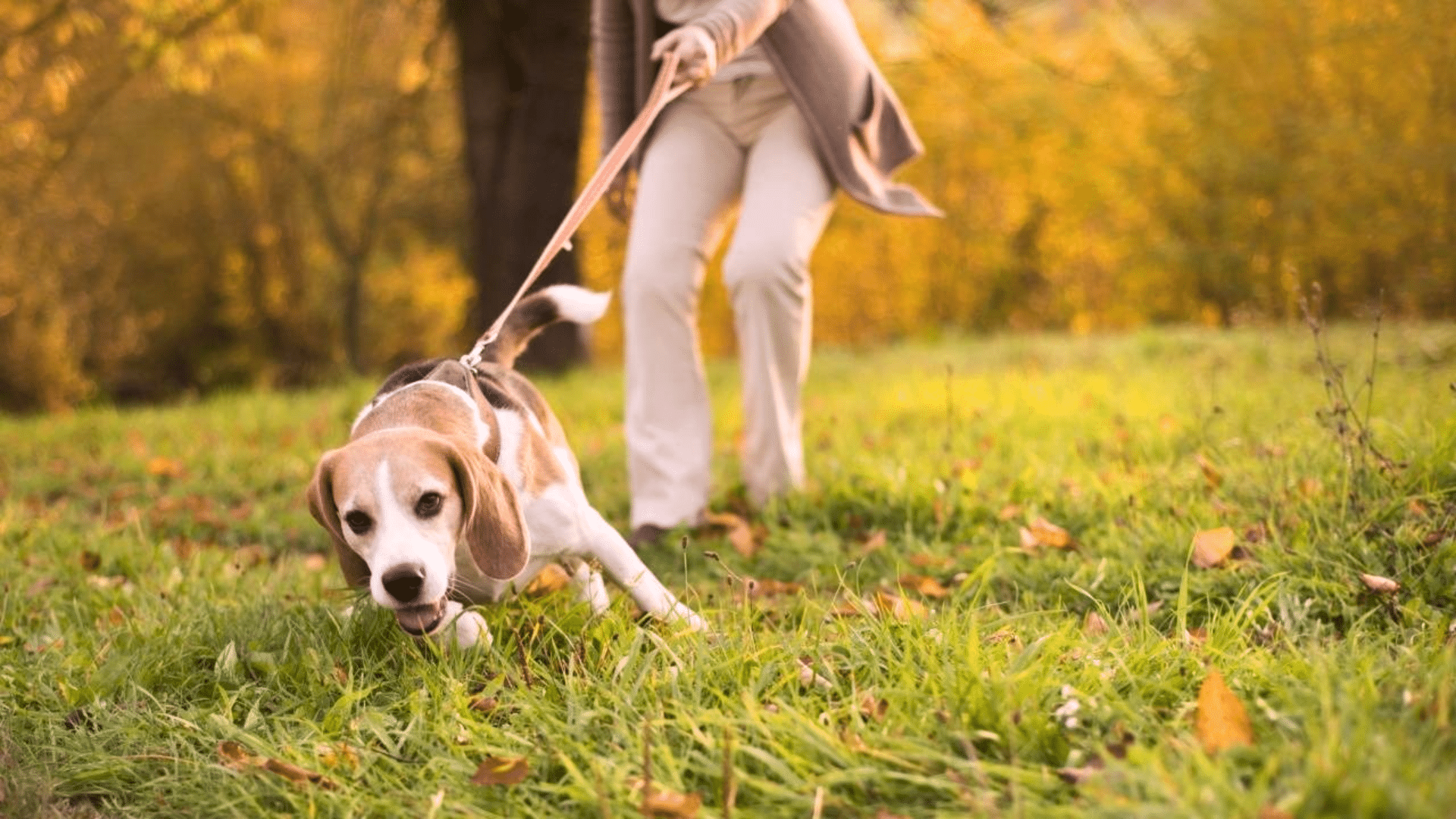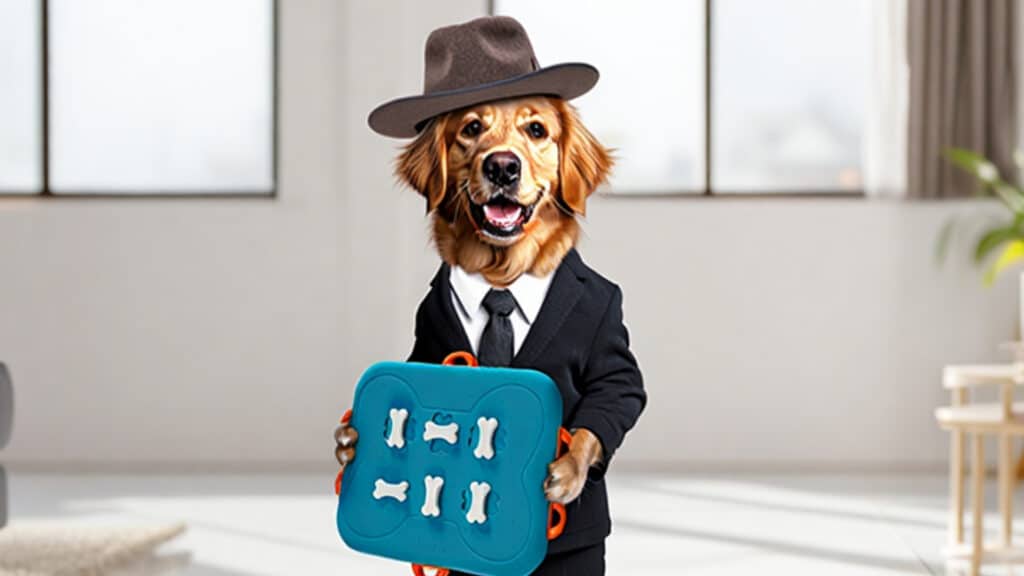Walking your dog should be relaxing, not a constant tug-of-war. Yet many owners know the struggle of a dog that pulls nonstop, making every walk feel like a workout.
The good news is you can fix leash pulling. With simple training, your dog can learn to walk calmly beside you.
In this guide, you’ll learn:
- Why do dogs pull on the leash
- Simple tools that make training easier
- Step-by-step methods to stop leash pulling
Leash training takes patience, but it helps you and your dog enjoy walks again.
This article focuses on practical, gentle ways to teach better walking habits without harsh methods or fancy gear, just clear steps and real results.
Why Dogs Pull on the Leash?
I know how easy it is to think your dog is just being stubborn, but that’s rarely the case. Most dogs pull on the leash because they’re excited, curious, or sometimes a bit nervous.
The world is full of smells, sights, and sounds that grab their attention. They want to explore everything, and pulling feels natural to them.
Many dogs also pull simply because they’ve never learned how to walk beside you. It’s not defiance, it’s inexperience.
Imagine how it feels to see so many new things at once; staying calm can be hard for them. Pulling is your dog’s way of saying, “I’m eager to go!”
With patient guidance and practice, you can teach your dog what calm walking looks like.
When you do, your walks become less of a struggle and more of a shared, relaxing experience for both of you.
Step-By-Step Guide to Stop Leash Pulling

Leash training takes time, but following the right steps helps your dog understand what calm walking means. Each stage builds trust and makes your walks smoother and more enjoyable.
1. Start Indoors or in a Quiet Yard
I always begin training in a quiet area, like my living room or backyard. This keeps distractions low so your dog can focus on you.
Hold the leash loosely and walk a few steps at a time. If your dog follows without pulling, give praise and a treat.
If they move too far ahead, stop and wait for them to come back. This step helps your dog learn that walking beside you keeps the fun going.
Once they’re comfortable indoors, you can slowly move to outdoor spaces.
2. Reward Calm Behavior and Loose-Leash Moments
When your dog walks beside you without pulling, reward them right away with treats or praise. The timing of the reward is key; your dog should link calm walking directly to the treat.
I keep treats handy so I can reward the exact moment the leash stays loose.
Over time, your dog will naturally walk close, knowing that calm behavior brings good things. Keep training sessions short, five to ten minutes, to keep your dog interested and focused.
3. Stop Walking when Your Dog Pulls
This is one of the most effective techniques I use. The moment your dog starts to pull, stop moving completely.
Don’t jerk the leash or yell, just wait. Most dogs will look back at you or pause when they realize you’re not following. The second the leash loosens, start walking again and reward your dog.
This simple pause teaches that pulling doesn’t get them anywhere, but walking calmly keeps the walk going.
Stay consistent every time you walk, and your dog will catch on quickly.
4. Slowly Add Distractions and Longer Walks
Once your dog can walk calmly in quiet areas, it’s time to practice around more distractions. Try walking near new scents, people, or sounds.
Keep treats ready and reward your dog for staying calm and focused on you.
If they start pulling again, go back to a quieter place for a while. Gradually increase walk times and distractions as your dog improves.
This steady buildup keeps your dog focused and confident, making walks calm and enjoyable for both of you.
Tips for Training Your Dog to Walk on a Leash without Pulling
Training takes time, but small habits make a big difference. These simple tips will help you stay patient, consistent, and in control while keeping your dog relaxed and happy.
- Keep sessions short: I train for about 5–10 minutes at a time. Short lessons help your dog stay focused and prevent frustration for both of you.
- Stay calm and patient: Dogs notice your mood. If you get tense or angry, your dog may feel stressed too. Keep your tone gentle and steady.
- Be consistent with cues: Use the same words every time, like “heel” or “let’s go.” This helps your dog understand what you want.
- Practice every day: Even short daily walks build strong habits. Skipping training too often slows progress.
- Reward often: I use small treats or praise when my dog walks nicely. It keeps them motivated to repeat the good behavior.
- End on a good note: Always finish when your dog does something right. This keeps them excited for the next walk.
Essential Training Tools You’ll Need
Before you start leash training, having the right tools makes everything smoother and less stressful for both you and your dog. These simple items help you guide your dog with comfort, control, and positive reinforcement.
1. Well-Fitted Harness
I always recommend starting with a well-fitted harness instead of a collar. It gives you better control and keeps pressure off your dog’s neck, which prevents choking or injury.
A front-clip harness works best because it helps redirect your dog toward you when they pull.
Make sure it fits snugly around the chest and shoulders without rubbing or slipping.
When your dog feels comfortable in their harness, they’re more focused and relaxed, making each walk a positive training experience.
2. Sturdy Leash
A sturdy leash is just as important as a harness. I prefer using a leash that’s about 4 to 6 feet long; it’s long enough to allow movement but short enough for control.
Avoid retractable leashes during training since they teach your dog that pulling gives them more space.
A strong, steady leash helps you guide your dog’s pace and maintain calm communication. You’ll feel more confident, and your dog will respond better to your direction.
3. Small Training Treats
Small training treats are key to building motivation and focus. Dogs learn best when rewarded right after they do something right.
I use soft, bite-sized treats that are easy to eat so my dog stays engaged.
Always carry a handful in your pocket or a treat pouch for quick rewards. Over time, your dog will connect loose-leash walking with good things.
It’s a simple but powerful way to reinforce positive habits without any pressure or punishment.
4. Clicker
A clicker can make training faster and clearer. Each time your dog walks calmly or checks in with you, click and reward immediately. The sound tells your dog exactly what action earned the treat.
I find it especially helpful during early training when timing matters most.
With consistent clicks and rewards, your dog starts to understand what you expect, steady steps, and calm walking by your side.
It’s a small tool that makes a big difference in building good leash manners.
What Not to Do to Stop Leash Pulling in Dogs?
I’ve learned that what you don’t do during leash training is just as important as what you do.
Avoid yanking the leash, shouting, or using choke collars, because these only create fear and confusion. When a dog feels scared, they can’t focus on learning.
Punishing or jerking the leash might stop pulling for a moment, but it doesn’t teach calm walking; it just builds stress. Instead, use positive reinforcement to reward good behavior.
Stay patient, keep your tone calm, and show your dog what you want instead of punishing what you don’t.
This approach builds trust and helps your dog learn faster while keeping walks safe and enjoyable.
When to Ask for Professional Support?
I always tell dog owners that there’s no shame in asking for help. If your dog shows aggression, fear, or anxiety during walks, it’s a sign you might need professional support.
The same goes if you’ve been consistent with training but don’t see much progress. A certified dog trainer or behaviorist can spot problems you might miss and give you a clear plan to move forward.
They use proven, positive methods that make learning faster and less stressful.
Sometimes, even one or two sessions can make a huge difference in how your dog responds and how confident you feel handling them.
Getting expert help isn’t giving up; it’s choosing what’s best for both you and your dog.
Conclusion
Leash training takes patience, but every small step forward is worth it. The goal isn’t perfection, it’s learning together.
When you stay calm, consistent, and kind, your dog will start to understand what you want. Some days will go better than others, and that’s okay. What matters most is steady progress.
Over time, your walks will feel easier, and you’ll notice your dog checking in with you more often.
That’s when you’ll know it’s working. The pulling fades, and what’s left is trust, comfort, and better communication.
Keep going, even when it’s slow. Each walk builds confidence for your dog and strengthens the bond you share. Peaceful walks aren’t far away; they just take practice, patience, and teamwork.








